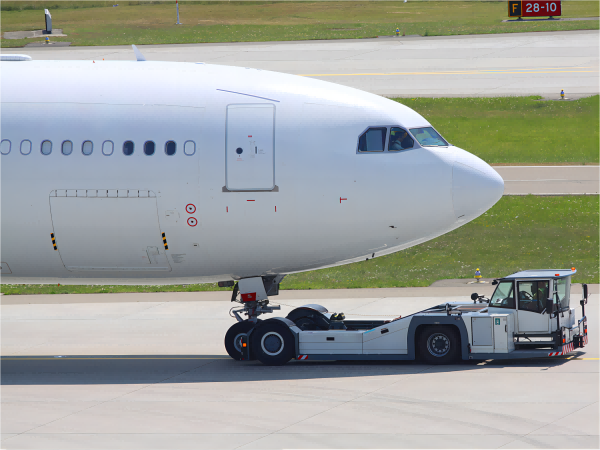What is Aircraft Towing and Taxiing Departure Mode?
In the process of flight departure, in order to overcome the problem that the airplane does not have the function of "reversing", it is necessary to move the airplane to the open area by the airplane towing equipment (push-out stage), and then the crew starts the airplane engine to taxi into the departure queue until the end of the runway to wait for the takeoff (engine-driven departure taxiing stage).

New Departure Towing Mode: Rodded Tractor Pushes Aircraft Out
The traditional taxiing process is inefficient in the launching phase due to the need for multiple people to work together, and is prone to aircraft damage and even casualty accidents. In the engine-driven departure taxiing phase, aircraft engines work on the ground for too long, causing problems such as engine damage from foreign objects on the ground, high fuel consumption/emissions and airport noise, as well as excessive engine depreciation and preparation costs. In the recent past, on June 25, 2023, a tragic case of an aircraft inhaling a ground crew member occurred at the San Antonio International Airport in Texas.
In this regard, since Israeli scientists proposed three ideal ways to realize aircraft traction taxiing in 2008, several foreign research institutes have explored a new taxiing mode with high feasibility - aircraft traction taxiing (also known as traction taxiing), aiming to realize the high speed of traction movement through the integration of the power of launching and departing taxi, the centralization of the maneuvering control and the The aim is to reduce the probability of tractor accidents and ground delays by integrating the power of the launch and departure taxi, centralizing the maneuvering control, and speeding up the tractor movement. In this process, the aircraft relies on external power movement from the ground from the time it leaves the berth until the takeoff end of the runway, thus delaying engine start until it is traveling with the takeoff queue and avoiding prolonged inefficient engine use.
Towing slip out of the way through the narrow-body aircraft departure test shows the advantages of energy saving, emission reduction, has long attracted the attention of many research institutions. NASA Ames Research Center, the University of South Florida, the German Aerospace Center, the Technical University of Dresden, the Technical University of Braunschweig, the Technical University of Darmstadt, the University of Nottingham in the United Kingdom, the University of Bristol, the University of Malta and Airbus, including a number of research institutes have been to the towed slip-out as an important way to achieve the next generation of efficient and safe aviation ground operation control Conducting research.
At present, the new traction glide departure mode has been applied in Charles de Gaulle Airport in France and some airports in the U.S. However, foreign countries still maintain a blockade on this technology, and a team from the Civil Aviation University of China (CAUC) in China is taking this technology out of the laboratory and into the vast skies of the motherland. According to the data from CAAC and related research, adopting this departure mode nationwide can save about 3.600 billion yuan in fuel consumption costs, reduce engine repair costs by about 392 million yuan, and reduce carbon emissions from the nation's airports by about 3.8358 million tons, and at the same time shorten ground delays by more than 2 minutes for each flight. Therefore, the State Civil Aviation Administration of China has taken the new departure mode as a key scientific research achievement transformation project, and the application of the new departure mode is an inevitable requirement for the development of China's civil aviation, as well as a heavy burden on the shoulders of civil aviation people.